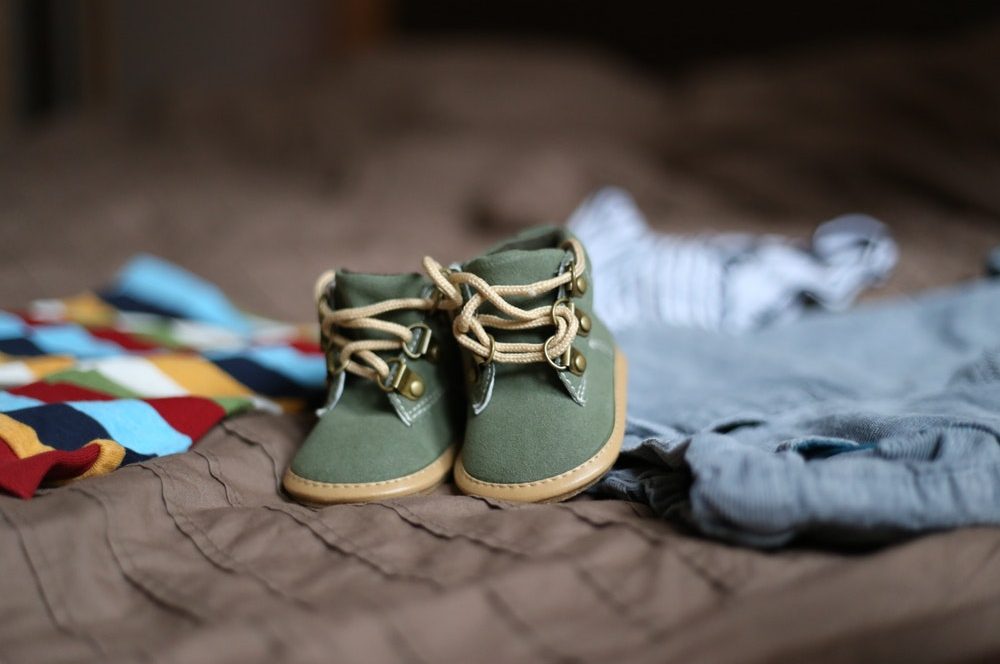Teaching Kids to Dress Themselves will always be challenging. But we bet you can make it fun too! “Don’t you love Katie’s outfit?” my girlfriend asked, “She dressed herself today.” At three, her daughter had proudly chosen a red shirt, blue pants, and to “match” them, one red sock and one blue one. Genius, I thought – both Katie’s choice and the fact that her mom chose not to “correct” her “out-of-the-box” approach. But what do we do with the child who resists dressing themselves, or for that matter the one who has trouble expressing themselves? Here are a few tips on how to allow your kids a little delight when it comes to self-adornment.
1) Don’t micro-manage. It doesn’t really matter whether we like their outfit as long as it does the job. If what they choose is inappropriate in some way, offer sensible guidance. It can feel overwhelming for a child to navigate their way through a series of decisions. Simplify their choices for them – okay, blue socks or green ones? Ramones shirt or Star Wars? After you guide them through the process a few times, they’ll know what to start with and how to put together an outfit. Limit their options. Offer one to three ensembles and have them mix and match. Start with velcro and snaps; move gradually to laces and zippers. Let them wear their shirt backwards or their sock inside out. Compliment them! A toddler with a sense of pride? Totally cute.
2) Make their clothing accessible. Hanging a row of hooks along a wall at about four feet up will be an easy way for kids to hang up and retrieve frequently used pants, skirts, sweaters, pyjamas and tees. Shoes and slippers can go underneath. Set up easy-to-reach cubbies with durable storage bins in them for other clothing and footwear. A bench is especially helpful to those who get wobbly while lifting a leg into pants, socks and such. Give each child their own hamper if you can. In a shared closet, a locker room look will be practical and encourage them to respect it as a communal space. Whatever works in your home for your kids!
3) If, like my almost four year-old, your little one CAN dress themselves but prefer not to, try to engage them in other ways. By asking my son to put on his own socks and then his little brother’s, he is given an opportunity to feel helpful, which for him is a motivator. Being the older child, he misses the attention his brother still gets when dressing; I often get down on the floor and have him sit with me while I lead him through the process. He feels supported but is still accomplishing the task himself. If resistance is an issue, figure out the source of it. Is your child afraid of something, or worried about making a “wrong” decision? Did they have a bad experience? Are they frustrated that they don’t know how to use a zipper? Be patient and allow them lots of time – rushing them will likely add to their stress.
4) Play dress-up! Keep a tickle trunk full of hats, tops and bottoms, costumes, socks, accessories and footwear. They can layer things as they like. Character play is loads of fun; each child can invent a personality, dress to develop them and then engage in a pretend tea party, pirate ship invasion or fire rescue mission. Go to the thrift store on a rainy day and have everyone choose a few things for the dress-up collection. Fun!
5) Lead by example. Set up your closet like a personal boutique. Keep the things you love on display or hang whole outfits up as visual cues. Let your kids hang out while you get ready for date night with your partner, but also try to have fun when you’re just heading out to the market. Allow yourself to be enchanted by…yourself. Yes, it’s kind of corny. Do it anyway. Let your kids see it! Encourage and offer ideas for creative expression. Even a simple flower stuck in a barrette or a pair of coloured shoelaces can make a kid feel like a rock star. Remember, too: you are the role model. Grown-ups really shouldn’t wear crotch-grazing skirts, lingerie as clothing or spandex outside of the gym. Equally true: five year-olds never look good in thigh-high boots, heavy makeup or painted-on jeans! There are so many ways to have fun with what we wear…don’t wreck it for your kids by giving clueless council! If you’re not sure about your fashion sense, find an episode or two of TLC’s “What Not To Wear” and pay close attention! Gotta love Stacy & Clinton…
Now, go play dress-up with your kids. Preschoolers with pinache? Heck yeah.
– Samantha Agar has two little boys who love to dress up as dinosaurs.











